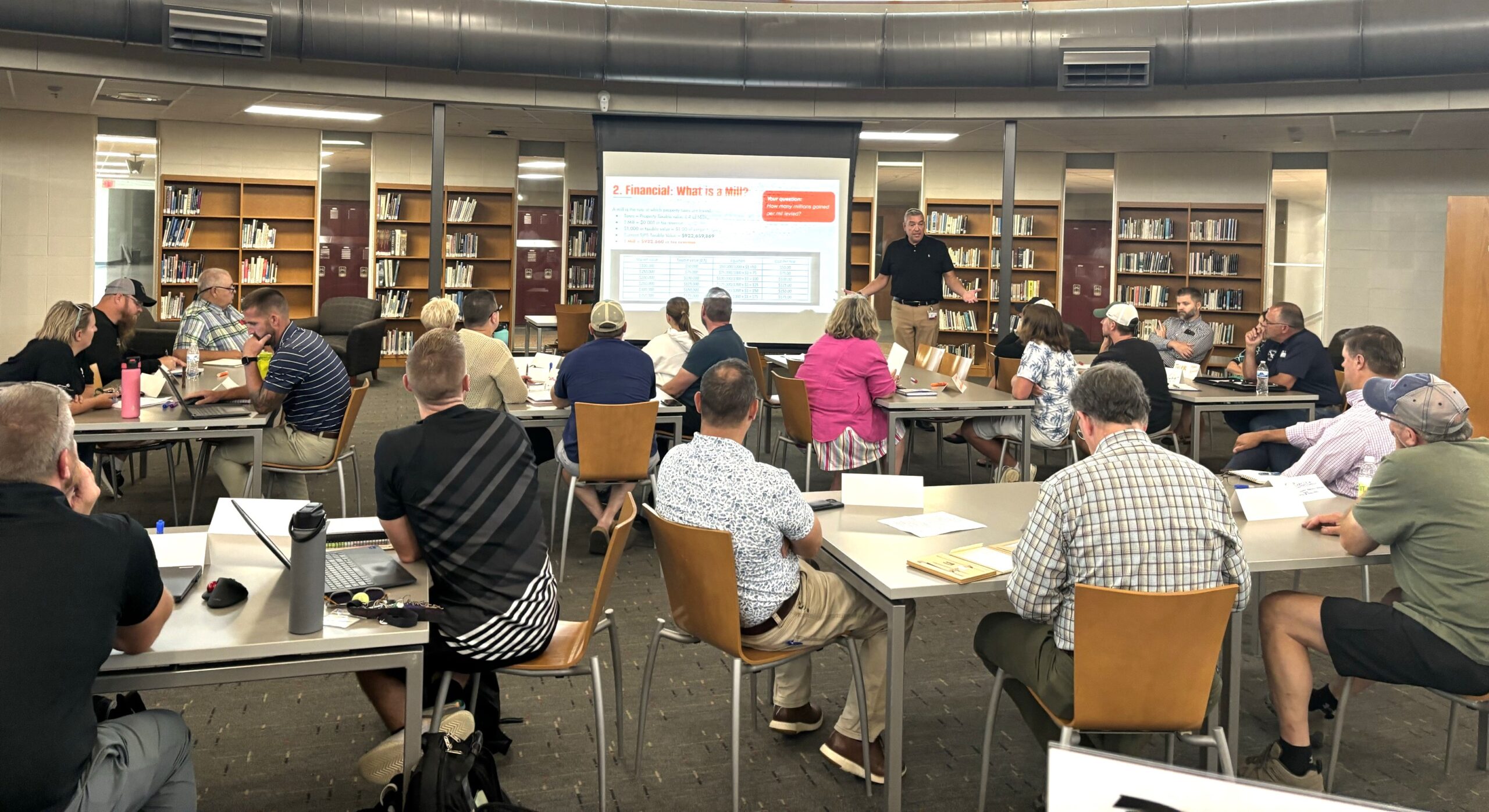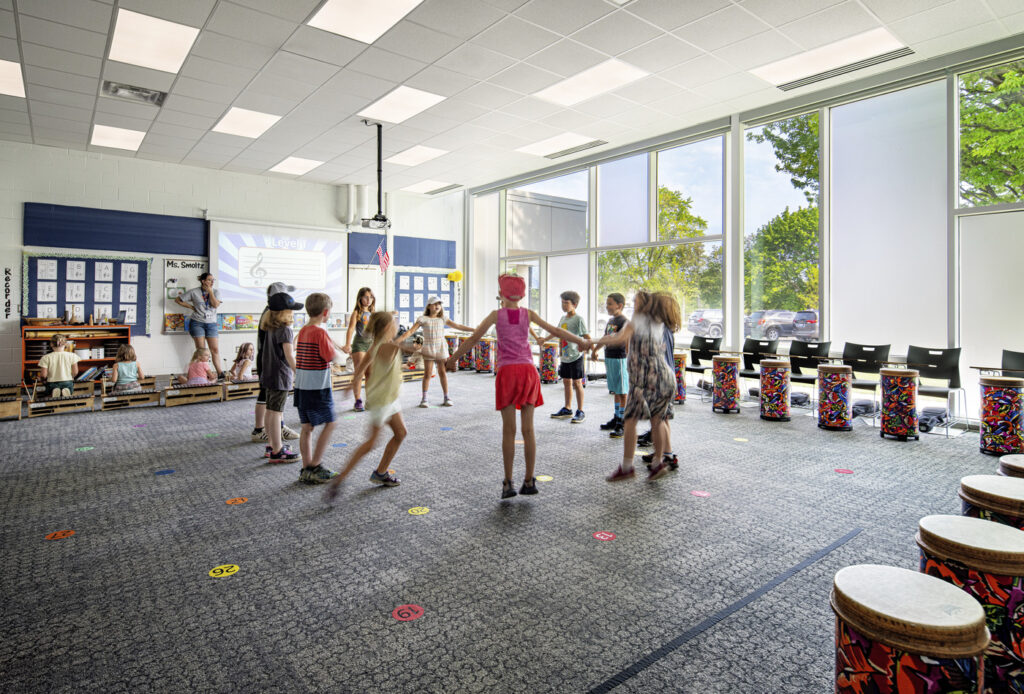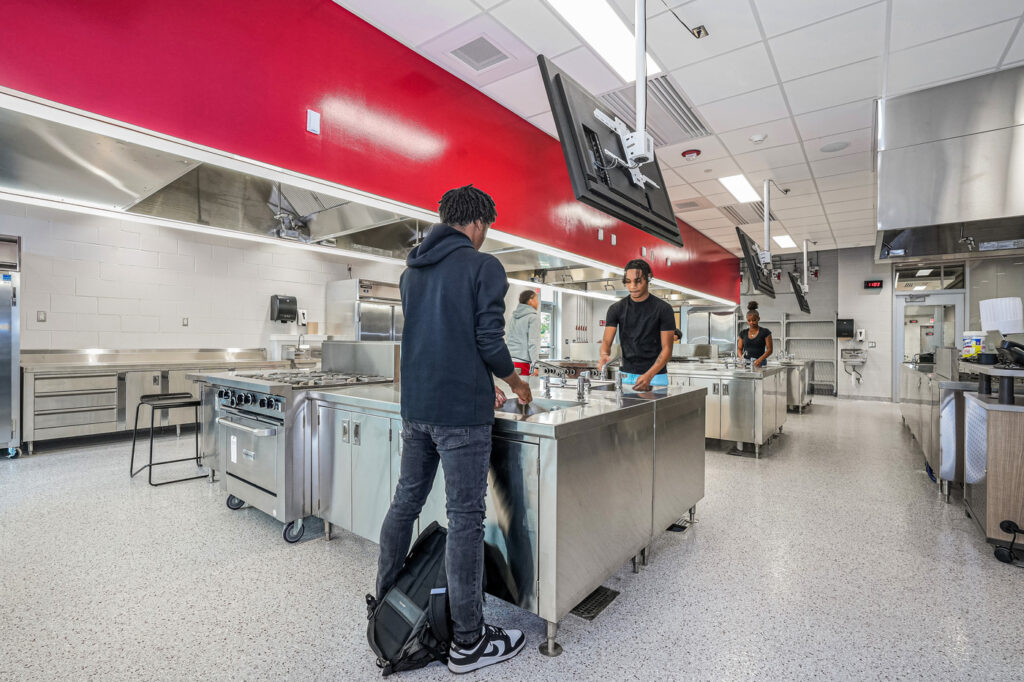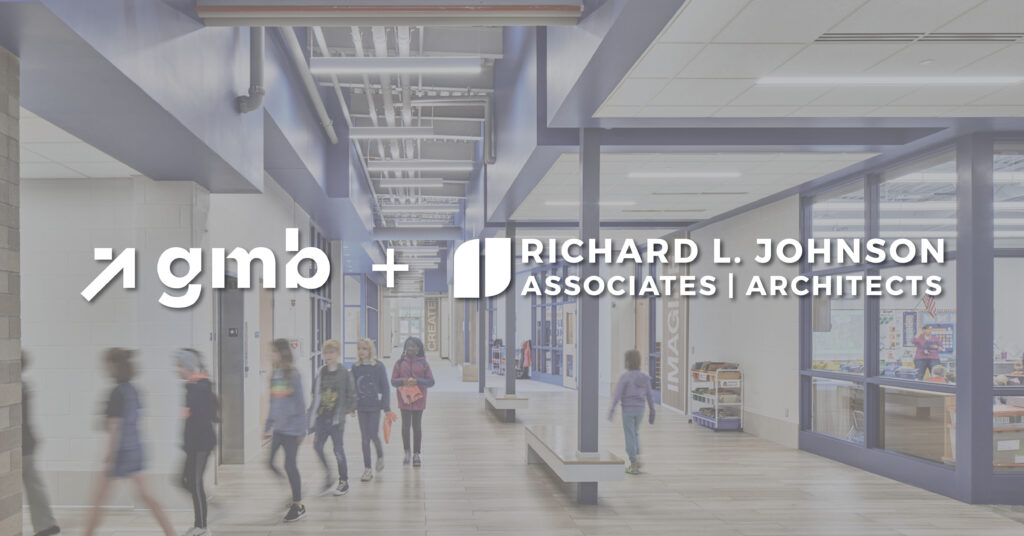Back in 1996, the state of Michigan began the new process of funding school improvement projects through election-based bonds. A voter-approved school bonds allow a school district to borrow funds for future construction projects. These bonds may affect the tax rate, or millage, of property owners located within the district.
Coming off a high level of community support for education bonds in 2020 and 2021, passage rates have steadily declined across the state. In fact, in the past five election cycles (between May 2023 and May 2024), the combined passage rate for school bonds in the state of Michigan is only 54.2%. No-increase proposals continue to have a much higher likelihood of approval, but that support has also decreased compared to previous election years.
So, what can a district do to mitigate the potential lack of support? To promote a successful bond campaign, careful planning and meaningful community engagement are a must.
Three must haves for bond planning success
- Start early! The first step a district can take is to start early – at least 16 months early to be exact. For example, a district looking to be on a May 2026 ballot should start the planning process in January 2025. This includes developing a facility assessment to accurately gauge your facility and financial needs, bond project development, state application process, and community campaign.
- Engage with depth that shows understanding of your community. Accurately capturing the voice of your community and your district will make sure your message is familiar and understandable.
- Building trust, community support, and sharing a vision for your education community is a heavy lift. Creating a steering committee to help inform bond planning can be a resource for gathering stakeholder voices and creating alignment in the proposed project scope. Identifying a “key communicators” group can also help lighten the load by tapping engaged, active community members who share a passion for education and community success. Their insights, skillsets, and networks can help a district connect with members of the community who may be harder to reach (non-parents, retirees, etc).
- Be clear with the goals of the district and how the bond will impact students and community members.
- Every community is different, and outreach must be customized, involving multiple channels and communication methods. Utilize a variety of tools to communicate with community stakeholders like surveys, social media, face-to-face meetings, print and digital media, and video, to name a few.
- Develop well-rounded scope language. A bond that addresses multiple groups’ needs and is focused on positive outcomes for all students will shine. For example, a bond that addresses aging facilities, the arts, athletics and improved traffic flow helps meet the needs of students and the community. Including a diverse range of focus areas demonstrates that the district is considering the needs of various groups and achieving a delicate balance between addressing current challenges and creating future opportunities. This approach will help excite and engage community members as they envision the future of their school district.
Successful bond campaigns in action
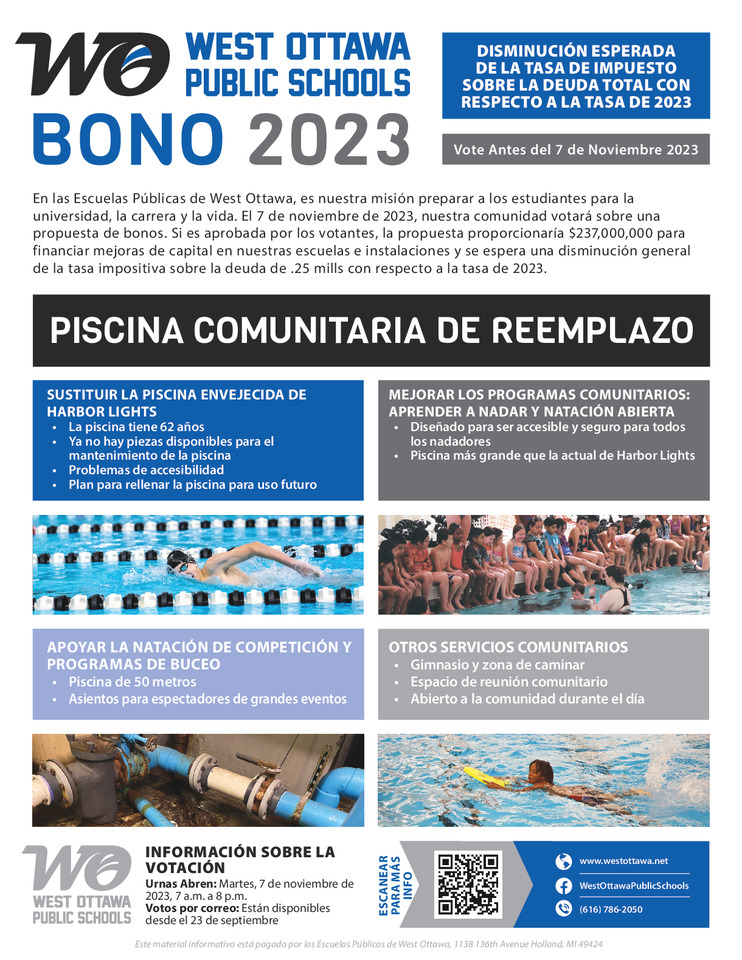
Engaging with a Diverse Community – West Ottawa Public Schools
After extensive voter analysis work evaluating surveys and community demographics, the West Ottawa Public Schools provided a campaign with equitable information for Spanish-speaking individuals in their district. With a well-branded and balanced approach, the proposed bond passed for the 2023 election with a no-tax-increase and 4,946 yes votes (56.2%). The final bond will bring WOPS students updated and secure facilities across the district, a new aquatic center, and a new elementary school gymnasium.
Virtual Approach to Bond Campaigns – Holt Public Schools
Working around a shutdown due to the pandemic, Holt Public Schools was tasked with creating a campaign that relied almost entirely on virtual community outreach. The campaign focused on asking the district members to fund a $148 million organizational transition that would support new security, new school buildings, and improved learning environments. This bond facilitated a projected tax decrease of 1.77 mils. To reach as many district members as possible, the district utilized virtual community forms, stakeholder engagement sessions, their district podcast, and worked with local news outlets to ensure awareness of the proposal.
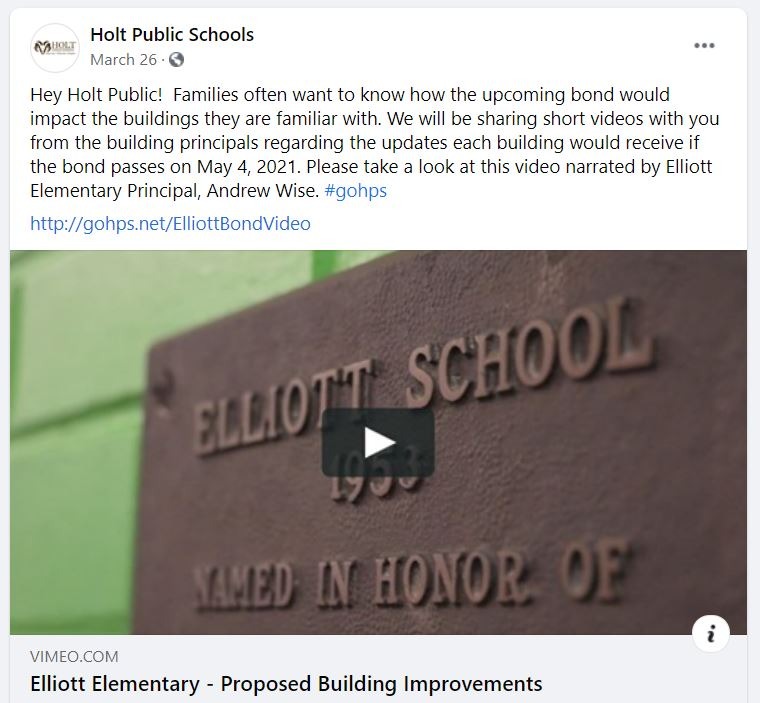
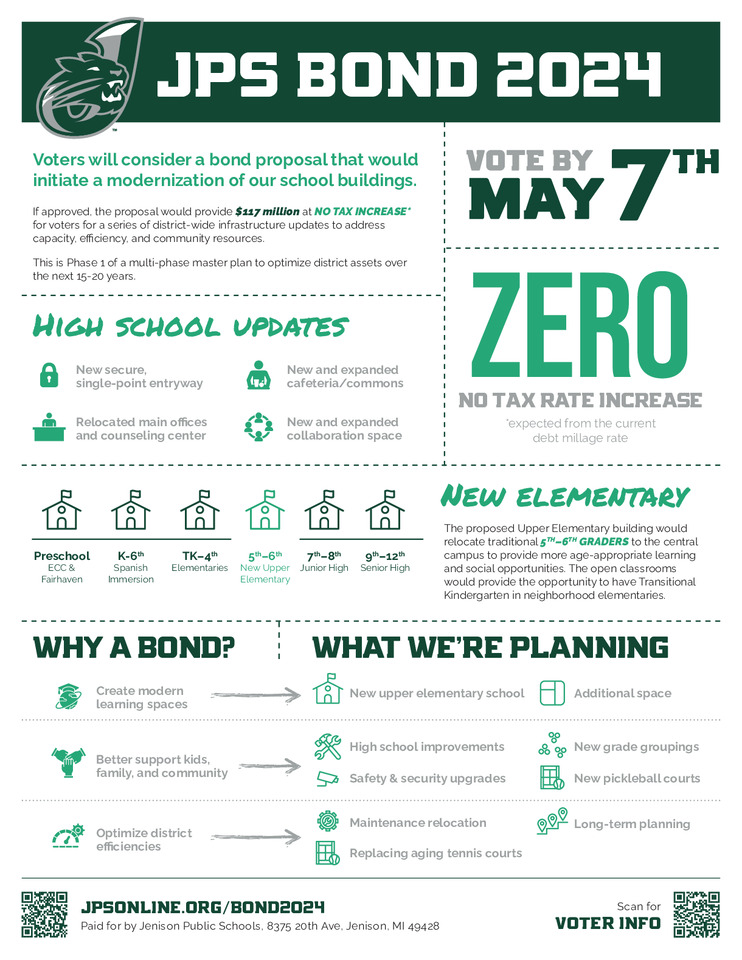
Informational Campaign for Modern Facilities – Jenison Public Schools
Jenison Public Schools has a supportive community with ample resources and a positive history of bond passage. A balanced informational campaign promised a new upper elementary school, high school improvements, a new transportation hub and some athletic improvements. With 64% of the vote, Jenison Public School voters approved the bond in May 2024. The campaign was well-timed with in-person information sessions, also utilizing short videos, website and app content, making it a well-rounded campaign accessible to all community members.
Changing Perceptions After Bond Failures – Shelby Public Schools
Shelby Public Schools was able to successfully pass a bond campaign in 2021 after more than 20 years, and at an increase of 3.64 mills. Of the 6,197 registered voters in the Shelby Public School District, 1,549 voted in the election to make the projects a reality. The campaign was community-forward and aimed to make the district’s updates an attractive school for current and future students. As each phase of the project was developed, the community participated in the final planning, design, and implementation of the school improvements. A small committee for each building was created for stakeholders to participate in and provide input and feedback.

Every district is different, from the needs of the facilities and students to the community. Taking each unique district’s needs in mind and creating engaging, authentic and transparent campaigns takes planning and experience. GMB has helped pass more than 135 bonds with our clients in Michigan and takes pride in helping districts improve their environments for students.

